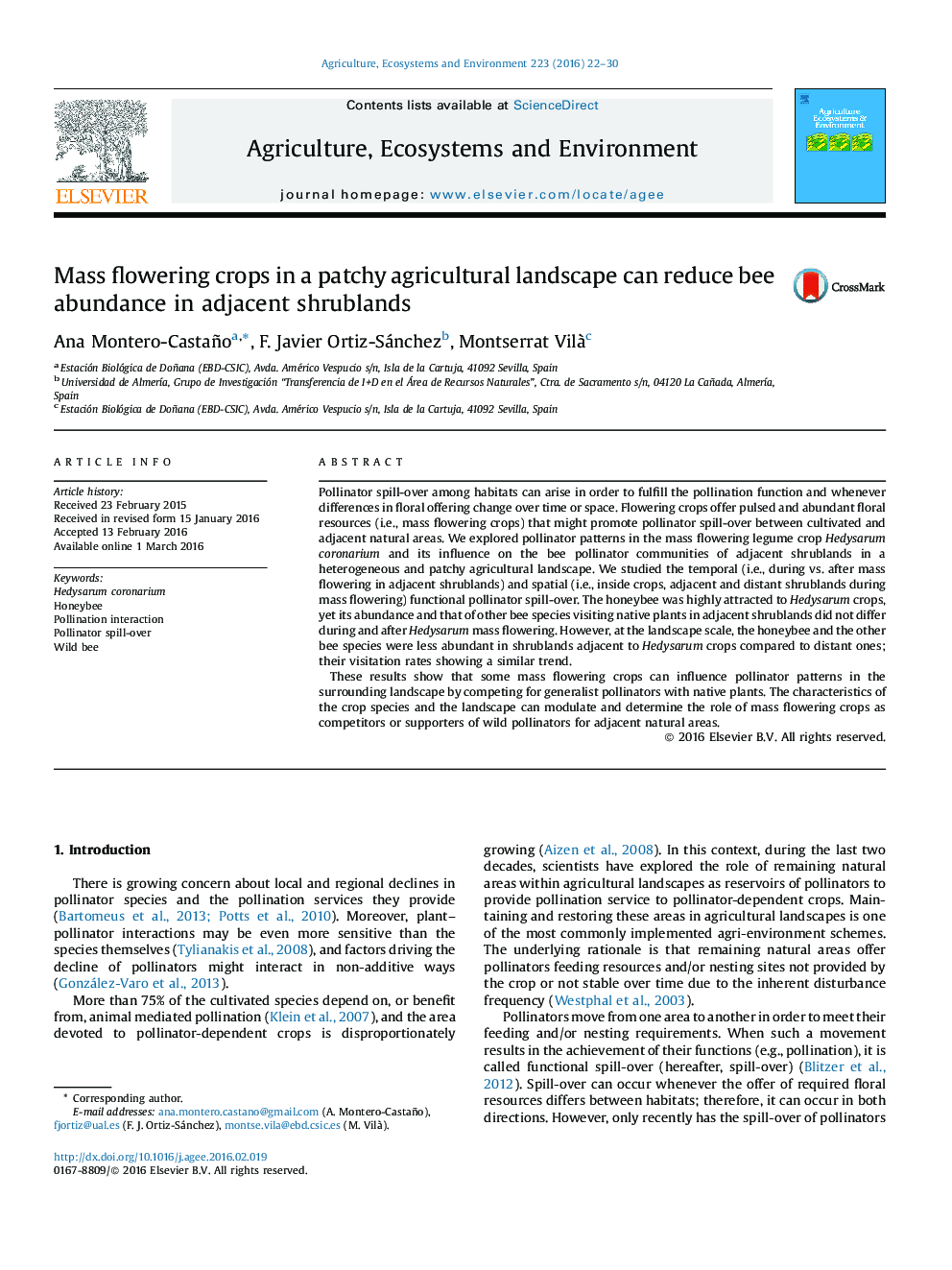| کد مقاله | کد نشریه | سال انتشار | مقاله انگلیسی | نسخه تمام متن |
|---|---|---|---|---|
| 2413480 | 1552029 | 2016 | 9 صفحه PDF | دانلود رایگان |
• Hedysarum mass flowering crops (MFCs) attract mainly honeybees.
• MFCs decrease bee abundance and visits in adjacent shrublands.
• Temporal bee spill-over from MFCs to adjacent shrublands is spatially diluted.
• No spatial spill-over of honeybee from MFCs: it concentrates its visits in MFCs.
• No spatial spill-over of other bees: they show slight and contrasting trends.
Pollinator spill-over among habitats can arise in order to fulfill the pollination function and whenever differences in floral offering change over time or space. Flowering crops offer pulsed and abundant floral resources (i.e., mass flowering crops) that might promote pollinator spill-over between cultivated and adjacent natural areas. We explored pollinator patterns in the mass flowering legume crop Hedysarum coronarium and its influence on the bee pollinator communities of adjacent shrublands in a heterogeneous and patchy agricultural landscape. We studied the temporal (i.e., during vs. after mass flowering in adjacent shrublands) and spatial (i.e., inside crops, adjacent and distant shrublands during mass flowering) functional pollinator spill-over. The honeybee was highly attracted to Hedysarum crops, yet its abundance and that of other bee species visiting native plants in adjacent shrublands did not differ during and after Hedysarum mass flowering. However, at the landscape scale, the honeybee and the other bee species were less abundant in shrublands adjacent to Hedysarum crops compared to distant ones; their visitation rates showing a similar trend.These results show that some mass flowering crops can influence pollinator patterns in the surrounding landscape by competing for generalist pollinators with native plants. The characteristics of the crop species and the landscape can modulate and determine the role of mass flowering crops as competitors or supporters of wild pollinators for adjacent natural areas.
Journal: Agriculture, Ecosystems & Environment - Volume 223, 1 May 2016, Pages 22–30
